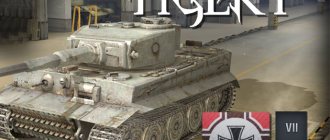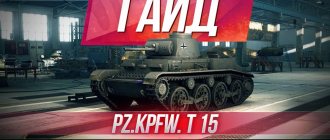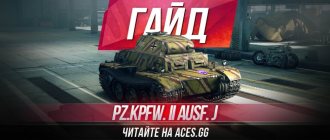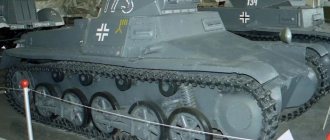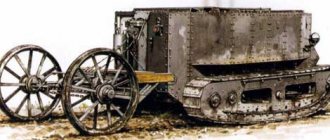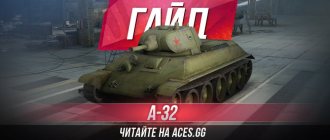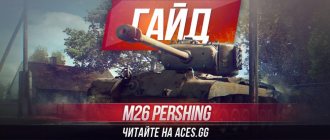German medium tank T-III. Memo to a Red Army soldier
Approved as a reminder on the use of the German combat vehicle - the T-III medium tank, designed for privates and commanding personnel of all branches of the Red Army and manuals for partisans and sabotage units operating in territory occupied by the enemy.
This document has been compiled for the preparation and publication of guidelines for the use of captured tanks after their capture by Red Army soldiers. From IKTP - /Romanov/
From the Military Publishing House IKO - /Zmiy / September 28, 1941
Warrior of the Red Army!
Master captured equipment to perfection!
In the battles for the freedom and independence of our Motherland, soldiers and commanders of the Red Army captured various samples of military equipment of Nazi Germany and its allies. Despite the unfamiliar design, in some parts of the Red Army tankers know how to deal with enemy equipment and successfully use it in battles with Nazi troops. However, in many formations, due attention is not paid to the study of enemy technology, which is unacceptable.
Every soldier of the Red Army must know all the features of the enemy’s weapons and military equipment in order to skillfully apply them in the defense of our Motherland - the Union of Soviet Socialist Republics.
The German medium tank T-III is the most advanced type of tank of the Nazi army. Has the following distinctive features:
1. High speed on and off roads.
2. Excellent ride quality.
3. A simple and reliable motor capable of consuming gasoline. However, to obtain the best results, you need to use aviation gasoline or other first-grade gasoline.
4. The small size of an artillery shot and the ability to fire a shot using an electric discharge device, which significantly increases the speed and accuracy of fire.
5. Convenient location of evacuation hatches, allowing for quick evacuation in the event of a tank fire.
6. Good observation devices providing all-round visibility from the tank.
7. Good tank radio equipment.
8. Ease of operation by untrained personnel.
Tankers Osipov and Gareev are mastering a captured tank. July 1941
Captured tank PiKpfw III Aust H being tested* in Kubinka. Summer 1941
Captured tank PzKpfw III Ausf J. Kubinka, 1943
The total weight of the average German T-III tank is 19-21 tons, the engine is a 12-cylinder petrol Maybach type with water cooling. Maximum engine power 320 hp. Fuel tank capacity - 300 l. The necks of the gas tank and cooling radiator are located in the engine compartment on the right along the tank. Access to the gas tank and radiator fillers is through the right hatch in the roof of the engine compartment.
Currently, the T-III tank is armed with a 50-mm tank gun, whose main characteristics are slightly higher than the domestic 45-mm tank gun mod. 1938, which significantly increases its combat capabilities compared to the tank of the specified type in previous releases with armament from a 37-mm tank gun.
In addition, many T-III tanks with a 50-mm gun have increased thickness of the frontal armor of the turret box and turret (up to a total of 52-55 mm), which makes them impervious to armor-piercing shells of a 45-mm anti-tank gun at a distance of further than 400 m. These tanks are usually equipped with equipment for overcoming deep fords and water obstacles up to 5 m deep. The mass of such tanks is 22-22.5 tons.
All known cases of the use of captured T-III medium tanks in Red Army units confirm the high combat characteristics of this type of tank.
The good armor protection of the T-III medium tank, its high smoothness, a large number and high quality of observation devices allow us to recommend the use of this type of tank, especially as a vehicle for the commander of a tank unit or a tank for reconnaissance of the close rear of the Nazi troops.
German tank PzKpfw III Ausf H, captured by Soviet soldiers. July 1941
PzKpfw lII Ausf J as the vehicle of the commander of a T-60 tank company. Winter 1942
When conducting reconnaissance and/or sabotage operations, it is best to overcome the line of contact of troops in the evening, since at this time the German trenches are mostly not completely filled and often a passing German tank does not cause much curiosity and is not checked by German infantrymen, while during the day much more difficult to avoid. When fighting on captured tanks deep in enemy defenses in the evening, it is not recommended to open your own lighting and fire from a machine gun, since lighting and machine-gun fire can give away the location of your tank to the enemy.
The most successful actions of captured tanks are when the enemy is positioned in groups of two.
Having been captured during battles, the tank can be repaired mostly in the field and using a minimum amount of materials and equipment. The tank units are highly reliable and can be operated even by an unqualified driver. A repair manual for the T-III tank is being developed.
For drivers familiar with driving trucks, tractors and tanks, we can recommend the following sequence for starting the tank and starting to move.
To start the engine of the T-III tank you need to:
1. Place the front gearbox lever in the middle position.
2. Open the gas tap by placing its handle, which is located on the engine bulkhead behind the right seat, in a vertical position.
3. Press and turn to the right along the tank the mass switch lever, which is located in the engine compartment and located opposite the engine bulkhead door.
4. Turn the key into the ignition switch completely.
5. Press the starter button while lightly pressing the gas pedal with your foot and pressing down the starting jet handle located on the floor to the right of the driver’s seat with your right hand.
6. If the engine does not start from the starter, you need to take the crank mounted on the right wing, open the hatch in the aft (rear) part of the tank, insert the crank into the ratchet of the inertial starter and smoothly turn it counterclockwise for about half a minute.
After this, to start the engine, pull the cable ring located to the left of the ratchet.
To start driving the T-III tank you need to:
1. Check the position of the brake pedal. The pedal must be in the upper (raised) position.
2. Press the clutch pedal with your left foot.
3. Without releasing the clutch pedal, place the front gearbox lever in the forward (forward) or rear (backward) position.
4. Place the rear gear lever in the position corresponding to the desired gear.
5. Smoothly release the clutch pedal and, simultaneously pressing the gas pedal, start moving.
To quickly stop the tank, you need to quickly press the clutch pedal and at the same time press the brake pedal hard.
In terms of control, the tank does not have any features that significantly distinguish it from domestically produced tanks.
To turn the tank to the right or left, you need to pull the corresponding vertical turning lever towards you while simultaneously pressing the gas pedal.
To shift the tank into a higher gear (to speed up the movement), it is necessary to move the rear gearbox lever to the position marked with a larger number on the sector scale, accelerate the tank by pressing the gas pedal, then quickly press and release the clutch pedal,
Shifting the tank to a lower gear is done in the same way.
To stop the tank, you need to move the rear gearbox lever to the position corresponding to the lowest gear, then press and quickly release the clutch pedal. Then, making sure that the tank is in low gear, depress the clutch pedal while simultaneously pressing the brake pedal with your foot, then move the front gearbox lever to the middle position, stopping the engagement of the engine with the gearbox and release the clutch pedal.
After stopping the tank, do not forget to remove the key from the ignition switch, which turns off the engine, and then open the mass shift lever, preventing the battery from discharging.
A tank with a 50 mm gun has the same basic control mechanisms as with a 37 mm gun, with the exception of the mass switch, which is located in the engine compartment on the wall to the left along the tank.
To load a 37 mm or 50 mm gun you need:
1. Pull the wedge bolt stopper handle, located on the right side in the upper part of the breech, to the right and push forward until the stopper fits into the socket. Then push the bolt handle (located at the bottom, on the right side of the breech) towards you and at the same time press the latch lever located in the bolt handle, after which the bolt will open.
2. Place the projectile in the tray and push it into the breech, after which the bolt will close itself. The gun is loaded.
Aiming is carried out through an optical sight attached to the left of the gun. Horizontal and vertical aiming of the gun is carried out by handwheels, also located to the left of the gun.
To fire a shot, it is necessary that the mass be turned on and the engine running, since the shot is fired by an electric discharge device.
To do this you need to do the following:
1. Turn on the electric release switch located in front of the turret direction indicator.
2. Connect the plugs to the electric release plugs located on the front wall of the tower to the right and left of the gun,
3. Press the red button to the right of the gun, after which the letter “F” will appear in the window next to the button
4. Press the release lever located on the handle of the gun's horizontal aiming handwheel.
The use of a tank machine gun has no special features compared to the use of an MG-34 infantry machine gun.
If it is impossible to use a captured tank, it must be rendered unusable, since even a slightly damaged tank can be restored and used against the Red Army troops.
Captured PzKpfw Ш Ausf H with paratroopers. Winter 1942
Interior of the turret of the PzKpfw III tank. Drawing from the instruction manual in Russian.
To do this, you must first remove the machine guns from the tank and hide or carry them away, for which you must do the following:
1. Open the tank mantlet hatch by pushing up the handle of the hatch lever, located in front to the right of the machine guns, and forcefully push the lever forward until it stops.
2. Turn the locking lever of the detachable casing cover away from you and fold back the casing cover.
3. Turn the locking lever of the cape located behind the casing away from you and fold back the cape.
4. Move the latch of the fork to the right and fold the fork back.
5. Lift the machine gun by the middle part and remove it, pushing it backwards.
To remove the machine gun from the ball mount, you need to turn it counterclockwise by 30-40° in order to bring the tide into the longitudinal groove, and then remove the machine gun, moving it back.
Then, using a sledgehammer or crowbar, destroy the engine, gearbox and breech of the gun. Access to the engine is through the over-engine hatch, and to the gearbox through the control compartment. If the hatches are closed, open them with a large screwdriver or crowbar. A gun can be damaged by pouring a handful of earth into the barrel and then firing it.
If there is fuel in the tank, the tank can be exploded by placing ends, rags or straw soaked in gasoline or oil on the neck of the tank and lighting them. To completely destroy the tank, you can attach a 1.5-2 kg tol charge at the junction of the frontal and side armor plates on the inside and detonate it with a fire tube or an electric fuse.
But it should be remembered that the competent use of a captured tank will make a much greater contribution to the approach of victory over the Nazi invaders.
Death to the German invaders!
Captured German tanks (Pz.Kpfw. III in the frame) are towed for repairs to plant No. 264 in Stalingrad.
General panorama of captured armored vehicles brought for repair to the territory of the branch of repair base 82 in Moscow (territory). The Pz. is clearly visible in the photo. II, its flamethrower version of the Pz. II "Flamm" ("Flamingo"), Pz. III, Pz. 38 (t), StuG III, armored personnel carrier Sd. Kfz. 252 and Sd. Kfz. 253.
Captured tank Pz.Kpfw. III from the Soviet 107th separate tank battalion. Volkhov Front, April 1942.
Commissioner of the 107th separate tank battalion, armed with captured German Pz.Kpfw tanks. III and Pz.Kpfw. IV, I. Sobchenko conducts political information among the fighters. Volkhov Front.
Senior Sergeant Nikolai Baryshev on a captured Pz.Kpfw tank. III from the 107th separate tank battalion. Volkhov Front.
Captured German medium tank Pz.III commander N.I. Baryshev and his crew. 107th separate tank battalion, Volkhov Front, summer 1942.
Workers at one of the Moscow factories inspect a PzKpfw III tank that has arrived for repairs. After repairs, the tank will go into service with one of the Soviet tank units equipped with captured German tanks.
Senior Lieutenant A.I. Losachev (platoon commander) gives the task to crew commanders N.I. Baryshev and I.I. Mishin. Soviet 107th separate tank battalion, armed with captured German tanks PzKpfw IV and PzKpfw III. Volkhov Front. The photograph was published in the Leningradskaya Pravda newspaper No. 183 (8289) dated August 4, 1942.
Soviet tank crews on captured German armored vehicles. This is a separate company of captured tanks, Western Front, March 1942. In the foreground is a Pz.III medium tank, then StuG III assault guns.
E
| E | |
| Combat weight, t | 19,5 |
| Crew, people | 5 |
| Overall dimensions, mm: | |
| length with gun forward | 5380 |
| width | 2910 |
| height | 2440 |
| clearance | 385 |
| Armor thickness, mm | |
| forehead of the body | 30 |
| board | 30 |
| stern | 21 |
| roof | 17 |
| bottom | 16 |
| forehead of the tower | 30 |
| board and stern | 30 |
| Max, speed, km/h: | |
| along the highway | 40 |
| by area | 18 |
| Power reserve, km: | |
| along the highway | 165 |
| by area | 95 |
| Overcoming obstacles: | |
| elevation angle, degrees | 30 |
| ditch width, m | 2,0 |
| wall height, m | 0,6 |
| ford depth, m | 0,8 |
| Support surface length, mm | 2860 |
| Specific pressure, kg/cm2 | 0,95 |
| Specific power, hp/t | 15,3 |
History of creation
After defeat in the First World War, the Versailles Peace Treaty prohibited Germany from having its own armored forces. The only exception was a limited number of armored vehicles allocated for the needs of the police.
However, starting in 1925, German engineers secretly worked on creating new German tanks. This is how the first modifications of Panzerkampfwagen I, II, III and IV appeared. The last model (Panzerkampfwagen IV), which was also called T-IV, was the most massive in terms of production. This Wehrmacht medium armored tank was mass-produced from 1937 to 1945, had a lot of modifications, and is considered the most popular German tank of the Second World War.
Initially, the medium German tank Panzerkampfwagen IV was created as an artillery support tank and did an excellent job of suppressing enemy firing points. But at the same time it was practically useless in tank battles. This Wehrmacht vehicle took its first battles in 1939. During the Polish campaign, the Germans lost 19 of these vehicles, and another 79 units were lost in France. But by 1941, the Germans had 517 Panzerkampfwagen IV tanks, 439 of which took part in Operation Barbarossa.
JL/60
| JL/60 | |
| Combat weight, t | 21,5 |
| Crew, people | 5 |
| Overall dimensions, mm: | |
| length with gun forward | 6280 |
| width | 2950 |
| height | 2500 |
| clearance | 385 |
| Armor thickness, mm | |
| forehead of the body | 50 |
| board | 30 |
| stern | 50 |
| roof | 17 |
| bottom | 16 |
| forehead of the tower | 30 |
| board and stern | 30 |
| Max, speed, km/h: | |
| along the highway | 40 |
| by area | 18 |
| Power reserve, km: | |
| along the highway | 155 |
| by area | 85 |
| Overcoming obstacles: | |
| elevation angle, degrees | 30 |
| ditch width, m | 2,0 |
| wall height, m | 0,6 |
| ford depth, m | 0,8 |
| Support surface length, mm | 2860 |
| Specific pressure, kg/cm2 | 0,94 |
| Specific power, hp/t | 13,9 |
F
| F | |
| Combat weight, t | 19,8 |
| Crew, people | 5 |
| Overall dimensions, mm: | |
| length with gun forward | 5380 |
| width | 2910 |
| height | 2440 |
| clearance | 385 |
| Armor thickness, mm | |
| forehead of the body | 30 |
| board | 30 |
| stern | 21 |
| roof | 17 |
| bottom | 16 |
| forehead of the tower | 30 |
| board and stern | 30 |
| Max, speed, km/h: | |
| along the highway | 40 |
| by area | 18 |
| Power reserve, km: | |
| along the highway | 165 |
| by area | 95 |
| Overcoming obstacles: | |
| elevation angle, degrees | 30 |
| ditch width, m | 2,0 |
| wall height, m | 0.6 |
| ford depth, m | 0,8 |
| Support surface length, mm | 2860 |
| Specific pressure, kg/cm2 | 0,95 |
| Specific power, hp/t | 15,1 |
H
| N | |
| Combat weight, t | 21,8 |
| Crew, people | 5 |
| Overall dimensions, mm: | |
| length with gun forward | 5410 |
| width | 2950 |
| height | 2440 |
| clearance | 385 |
| Armor thickness, mm | |
| forehead of the body | 30 +30 |
| board | 30 |
| stern | 30 |
| roof | 17 |
| bottom | 16 |
| forehead of the tower | 30 |
| board and stern | 30 |
| Max, speed, km/h: | |
| along the highway | 40 |
| by area | 18 |
| Power reserve, km: | |
| along the highway | 165 |
| by area | 95 |
| Overcoming obstacles: | |
| elevation angle, degrees | 30 |
| ditch width, m | 2,0 |
| wall height, m | 0,6 |
| ford depth, m | 0,8 |
| Support surface length, mm | 2860 |
| Specific pressure, kg/cm2 | 0,94 |
| Specific power, hp/t | 13,7 |
G
| G | |
| Combat weight, t | 20,3 |
| Crew, people | 5 |
| Overall dimensions, mm: | |
| length with gun forward | 5410 |
| width | 2950 |
| height | 2440 |
| clearance | 385 |
| Armor thickness, mm | |
| forehead of the body | 30 |
| board | 30 |
| stern | 30 |
| roof | 17 |
| bottom | 16 |
| forehead of the tower | 30 |
| board and stern | 30 |
| Max, speed, km/h: | |
| along the highway | 40 |
| by area | 18 |
| Power reserve, km: | |
| along the highway | 165 |
| by area | 95 |
| Overcoming obstacles: | |
| elevation angle, degrees | 30 |
| ditch width, m | 2,0 |
| wall height, m | 0,6 |
| ford depth, m | 0,8 |
| Support surface length, mm | 2860 |
| Specific pressure, kg/cm2 | 0,95 |
| Specific power, hp/t | 14,7 |
M
| M | |
| Combat weight, t | 22,7 |
| Crew, people | 5 |
| Overall dimensions, mm: | |
| length with gun forward | 6410 |
| width | 2950 |
| height | 2500 |
| clearance | 385 |
| Armor thickness, mm | |
| forehead of the body | 50+20 |
| board | 30 |
| stern | 50 |
| roof | 18 |
| bottom | 16 |
| forehead of the tower | 57 |
| board and stern | 30 |
| Max, speed, km/h: | |
| along the highway | 40 |
| by area | 18 |
| Power reserve, km: | |
| along the highway | 155 |
| by area | 85 |
| Overcoming obstacles: | |
| elevation angle, degrees | 30 |
| ditch width, m | 2,0 |
| wall height, m | 0,6 |
| ford depth, m | 1,3 |
| Support surface length, mm | 2860 |
| Specific pressure, kg/cm2 | 0,94 |
| Specific power, hp/t | 13,2 |
** In the numerator - for tanks converted from Ausf.L, in the denominator - from Ausf.M.
JL/42
| JL/42 | |
| Combat weight, t | 21,5 |
| Crew, people | 5 |
| Overall dimensions, mm: | |
| length with gun forward | 5520 |
| width | 2950 |
| height | 2500 |
| clearance | 385 |
| Armor thickness, mm | |
| forehead of the body | 50 |
| board | 30 |
| stern | 50 |
| roof | 17 |
| bottom | 16 |
| forehead of the tower | 30 |
| board and stern | 30 |
| Max, speed, km/h: | |
| along the highway | 40 |
| by area | 18 |
| Power reserve, km: | |
| along the highway | 155 |
| by area | 85 |
| Overcoming obstacles: | |
| elevation angle, degrees | 30 |
| ditch width, m | 2,0 |
| wall height, m | 0,6 |
| ford depth, m | 0,8 |
| Support surface length, mm | 2860 |
| Specific pressure, kg/cm2 | 0,94 |
| Specific power, hp/t | 13,9 |
L
| L | |
| Combat weight, t | 22,7 |
| Crew, people | 5 |
| Overall dimensions, mm: | |
| length with gun forward | 6280 |
| width | 2950 |
| height | 2500 |
| clearance | 385 |
| Armor thickness, mm | |
| forehead of the body | 50 +20 |
| board | 30 |
| stern | 50 |
| roof | 18 |
| bottom | 16 |
| forehead of the tower | 57 |
| board and stern | 30 |
| Max, speed, km/h: | |
| along the highway | 40 |
| by area | 18 |
| Power reserve, km: | |
| along the highway | 155 |
| by area | 85 |
| Overcoming obstacles: | |
| elevation angle, degrees | 30 |
| ditch width, m | 2,0 |
| wall height, m | 0,6 |
| ford depth, m | 0,8 |
| Support surface length, mm | 2860 |
| Specific pressure, kg/cm2 | 0,94 |
| Specific power, hp/t | 13,2 |
** In the numerator - for tanks converted from Ausf.L, in the denominator - from Ausf.M.
